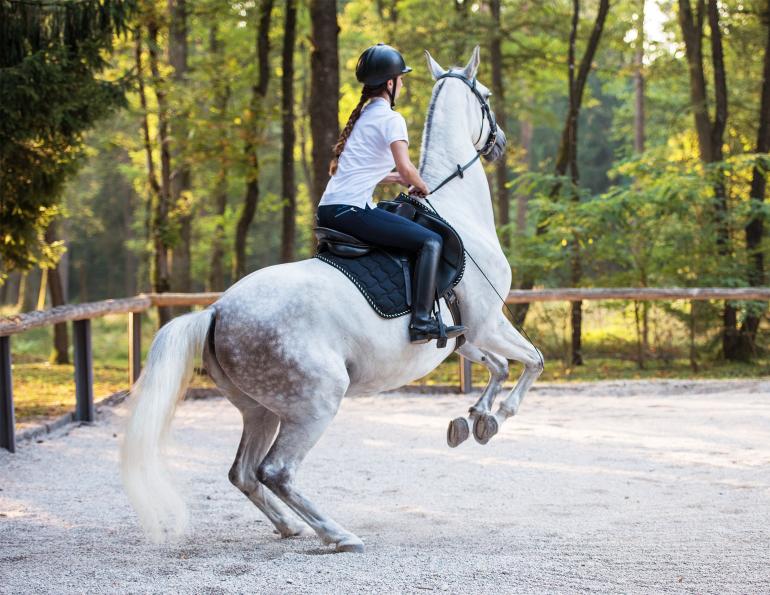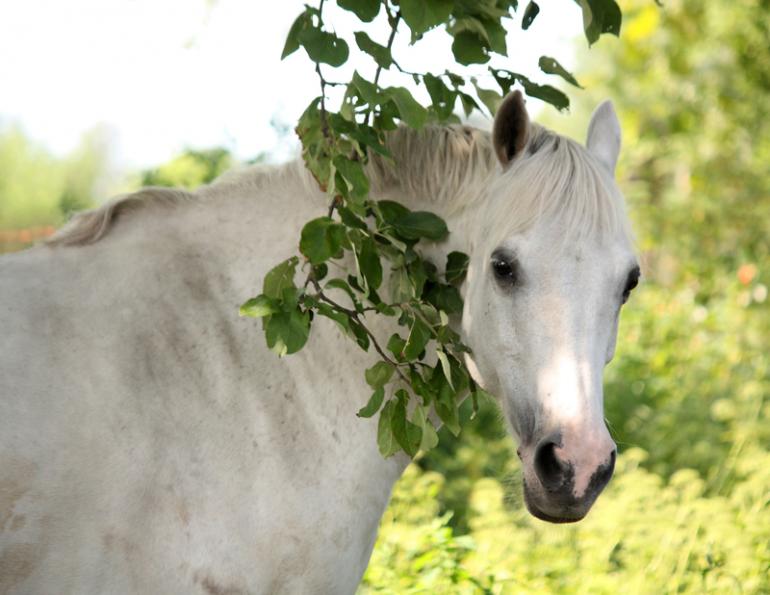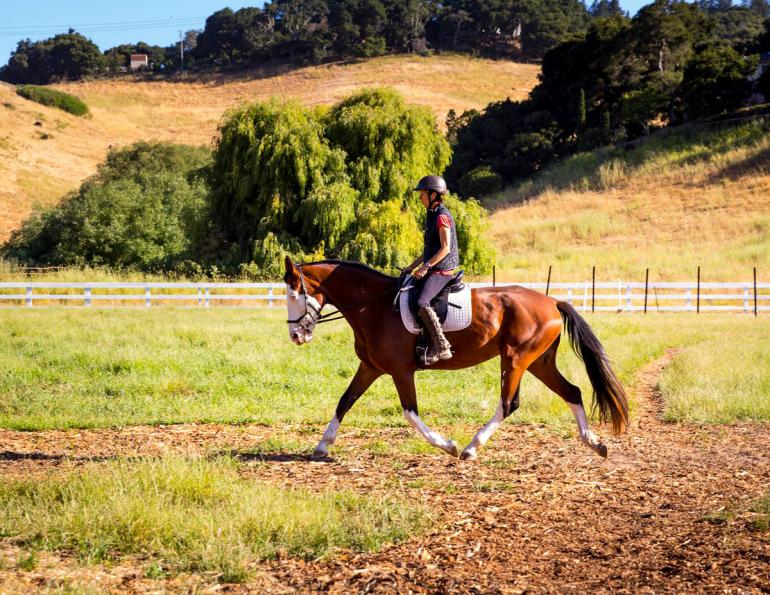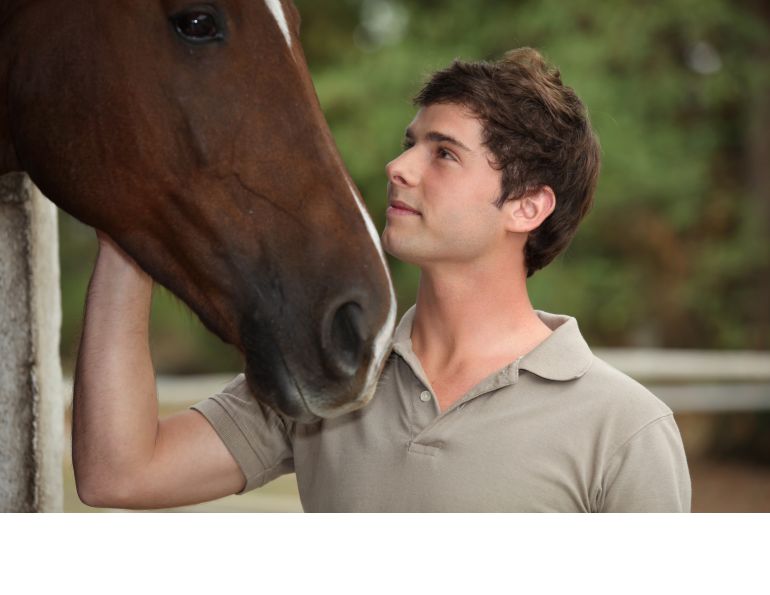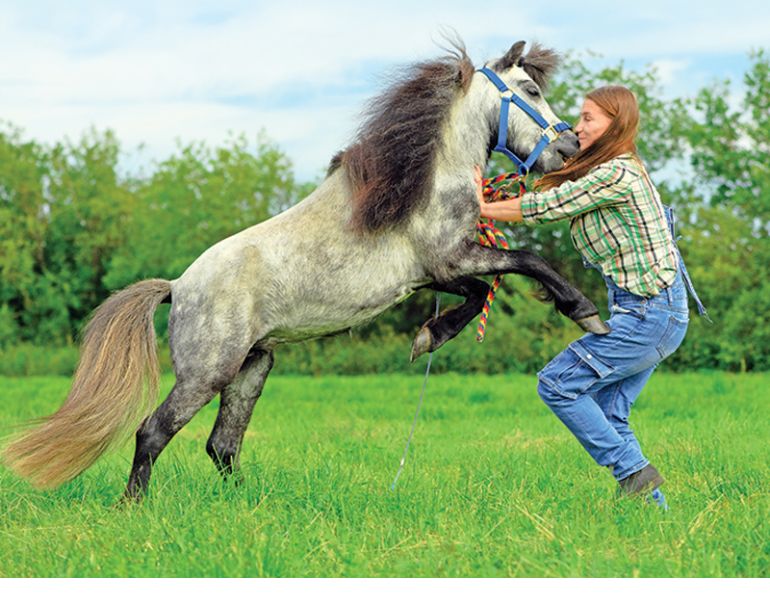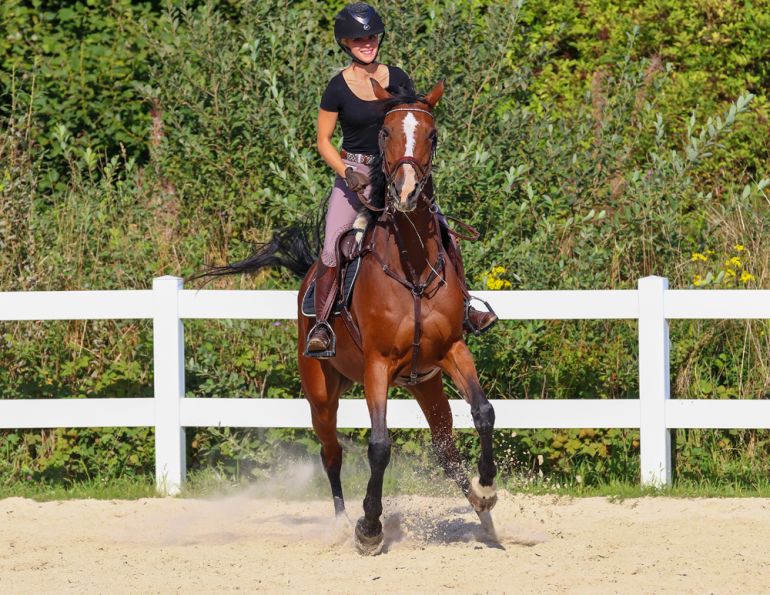By Will Clinging
I was sitting at the ferry terminal on my way home from teaching a clinic. Reflecting on the events of the weekend, a few things come to mind about some of the horses I worked. The horses ranged from old faithful geldings, to very inexperienced yearlings, to a couple that were exhibiting “problem behaviour.”
I have long held the belief that problem behaviour is only an expression or symptom of a deeper-rooted problem. The challenge for us is to correctly diagnose what is actually going on so we can truly help the horse overcome their seemingly problem expression. I believe that too many horses are unfairly labeled as problems when really they are just misunderstood and mishandled.
Pain, fear, confusion, frustration, poor early training, multiple or inconsistent handlers (in some cases both), ill- fitting equipment, and environmental factors that the horse can not understand can all lead to behaviour that projects itself as being a problem. Too often we do not see or understand the whole scenario and we jump to the conclusion that the horse is a “bad horse.” The horse isn’t usually the problem; he just has an issue that he can’t find a better solution for.
I had a couple of different “problem” situations this weekend: one horse that reared, and one horse with a trailer loading issue — both problem situations with causes and solutions that were only indirectly related to the expressed behaviour.
Horse #1 – Rearing
The rearing horse was a seemingly quiet, mature mare. She was relatively new to the owner so there was not a lot of background information about her. She had been ridden but was oversensitive with the bit and bridle. When she was being ridden by a heavier rider she got upset, reared up, and flipped over. These were all the details I had to start with.
When I began to work with her, she was tacked up and we started some work in hand using the bridle. I wanted to know just how sensitive she was. It became evident that she was trying to be obedient in giving to contact, but was unable to maintain any connection with the bit. She was very stiff laterally through the body and the combination of forward movement and contact caused her to stop moving. Her head and neck were consistently too high and tense. I tried to help her learn that she could lower her head and neck to release some of the tension she was holding, and she was willing to do what I asked of her but she could not easily bend her neck; her head and neck were just pivoting from her withers. She was also fussing with the bit if there was any contact on it.
Related: Complicated Horses
At this point I had much more to go on. I knew she was obedient and likely sore, so I removed the noseband on her bridle to allow her to open her mouth. Dental issues can sometimes cause an increase in tension, discomfort, and inflexibility. Once she could open her mouth she did relax quite a bit. I stopped trying to put her “on the bit” when I would take contact with her mouth. I did want her to lower her head and neck and try to bend through the neck, but she could not do it. Now I knew there were a couple of factors that contributed to the problem: the stiffness in her neck was not allowing her to relax through her body, and because she expected contact to cause further discomfort she would overreact in anticipation of pain.
Over the rest of the weekend we tried to help her relax and accept the contact from the bit in a more comfortable way. We encouraged her to bend and soften through the body as much as she could with her neck still out. The solution to her problem never really touched on rearing at all. We addressed the factors that led to rearing, and she turned out to be a wonderful, quiet, tolerant, very sweet horse that has been dealing with chronic pain. A visit from the chiropractor will help her with the physical aspect of her problem, and a change in approach through understanding what she is dealing with should ensure she does not rear again.
Horse #2 – Trailer Loading
This horse was a five-year-old gelding that had a reasonable amount of trailering experience, but had developed a bad habit of bolting out of the trailer. The problem then progressed to bolting to escape his handler. This horse has an undiagnosed unsoundness that comes and goes; the owner and a team of veterinarians are unsure what the problem is. I personally knew the horse as I helped start him and have worked with him on and off over the past several years. He’s not a bad horse, but he’s bratty and he does like to push people’s buttons. He continued to make the trailer a big deal; he could be loaded, but would not allow a divider or the door to be closed without bolting to escape.
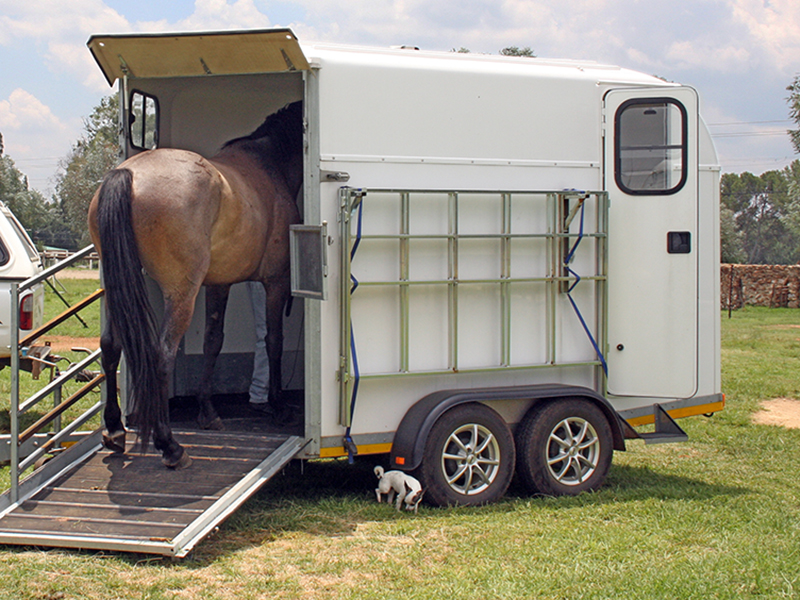
Photo: Shutterstock/Bettina Calder
Knowing the horse helped me a lot because I was familiar with his past education. As I worked with him and the trailer he continued looking for an excuse to bolt, which he did, taking me skiing across the yard with him. Fortunately, he did not get away from me, but there was no point in continuing with the trailer while he was thinking only about escape. I went back to helping him learn that escaping and bolting were bad options. He did eventually decide that trying to avoid the situation by getting strong was not effective. When we approached the trailer again he was apprehensive, but he did load and unload quietly. The apprehension came from anticipation and an expectation that he is supposed to get upset and then escape.
Changing the pattern of escape allowed him to think more about dealing with the trailer in a more deliberate manner. I did not have another problem with him at the trailer.
Every horse has the potential to exhibit “problem behaviour” although they are not really problem horses. We are often the cause of whatever it is that goes wrong. There is no such thing as a problem horse in the wild, so we should accept responsibility: if you are not part of the solution, you are part of the problem.
There are too many variables for me to list them all here, but almost always there are overlooked underlying factors that lead to behaviour changing for the worse.
If we take the time to analyze the whole picture, including where our horses live, how much turnout they get, and how much companionship they get, we often find situations that lead to problems. If the behaviour is always bad, try changing some of your habits before expecting to change your horse’s habits. Give him the benefit of the doubt and get some help to find resolution. Remember, he is not a bad horse — just a good horse that has learned to behave badly.
Related: Do Equestrians Know How Their Horses Learn?
To read more by Will Clinging on this site, click here.
Main photo: iStock/SimonKR



